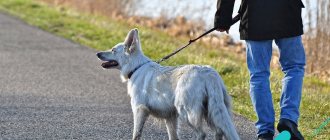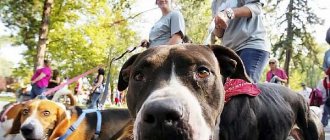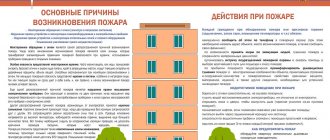Federal Dog Law: Rules for Keeping Pets
In Russia there is Law No. 498 “On the Responsible Treatment of Animals...”. The main goals of this law are to regulate relations in the field of treatment of animals, ensuring safety and humanity when treating animals.
Also, the issue of keeping pets is regulated by such regulations as:
- Decree of the Government of the Russian Federation No. 25 “On approval of the Principles for the use of residential premises.”
- Federal Law No. 52 “On the sanitary and epidemiological welfare of society.”
- Law “On Veterinary Medicine”.
- Civil Code of the Russian Federation.
- Criminal Code of the Russian Federation.
Federal Law “On the Responsible Treatment of Animals” in Article 13 establishes a number of requirements for keeping pets. In particular:
- Compliance by their owners with general requirements for keeping animals, as well as compliance with the rights and legitimate interests of persons living in an apartment building.
- A ban on the use of animals for business purposes, except in cases established by the Government of the Russian Federation.
- The maximum number of animals is determined based on the owner’s ability to provide them with appropriate conditions.
- Walking pets must be carried out under the condition of ensuring the safety of citizens, animals, as well as the safety of other people's property.
- Walking a potentially dangerous dog without a muzzle and a leash, regardless of the place of walking, is prohibited.
The Law does not contain any rules regarding places where dogs are allowed to be walked. Based on regional regulations, a number of requirements can be derived regarding where dogs can be walked. These requirements include:
- The area intended for walking must be more than 400 sq.m.
- The specified area should be located at least 25 meters away from residential buildings and business centers.
- It is prohibited to walk pets near childcare facilities.
- The surface of the dog walking area must be changed at least once a year.
Current legislation contains a ban on the possibility of visiting parks with animals for the purpose of walking them.
The exception is the separate fenced areas for walking animals organized within the park. In addition, in the green zone there may be internal regulations that do not allow walking with dogs.
General care requirements
The owner's responsibilities are specified in Sec. 3 tbsp. 9 parts 1 and 2. It says here that a person is obliged:
- comply with established zootechnical, zoohygienic, veterinary-sanitary and sanitary-epidemiological norms and rules (specified further);
- provide conditions necessary from the point of view of biological and individual characteristics;
- register the pet and, if necessary, provide professional veterinary care;
- exclude the possibility of the birth of unwanted offspring;
- at the request of government officials involved in the field of animal protection, bring your ward for regular examinations, diagnostic tests, vaccinations and other preventive measures;
- dispose of the body of a deceased dog.
According to the document, a dog can only live in a place where:
- she does not pose a threat to surrounding citizens;
- there is enough free space, light, air;
- the temperature and humidity conditions are normal;
- there is a possibility of contact with other animals;
- there are conditions that do not allow the animal to freely leave the boundaries of the holding area and at the same time protect it from negative external influences.
Important! Giving up rights to a pet if it is impossible to provide competent care does not relieve a person of responsibility for its fate until it is placed with a new owner or transferred to a shelter.
The procedure for keeping dogs in the apartment
According to the Civil Code, animals are animate objects of civil rights and the same rules that apply to any purchased item may apply to them. If a dog lives in the owner’s apartment, it should not in any way pollute common areas: staircases, entrances, local areas, as well as attics and basements. When walking your dog, you must remember that the Law prohibits a pet from barking and whining on the street or in an apartment from 10 p.m. to 8 a.m.
By law, it is prohibited to walk animals in crowded places and without a leash. Children under 14 years of age are not allowed to walk a dog unless accompanied by an adult.
In some regions, for walking dogs in the wrong place, the owner may be held liable in the form of a fine:
- walking a dog without a leash in a park or square - from 1000 to 2000 rubles;
- walking an animal on the territory of a children's institution - a fine in the amount of 1000 to 2000;
- transporting a dog without a leash and muzzle in public transport - from 500 to 1000 rubles;
- visiting a store or other retail facility with a dog without a muzzle or leash - a fine of 1,000 to 2,000 rubles;
- It is prohibited to keep dogs in communal apartments without the consent of neighbors. For violation of this regulation, a fine of up to 2,000 rubles is provided;
- It is forbidden to arrange a fight between dogs;
- Walking a dog while intoxicated - a fine of up to 5,000 rubles.
Walking rules
To regulate the rules of walking, the federal law of the Russian Federation allocates an entire article, the provisions of which can be used by both dog owners to prove their case, and by residents of an apartment building if they have complaints.
You can walk your dog wearing a muzzle and with or without a leash, depending on the breed and height. But if you are keeping a dog of a fighting breed, you must walk it using safety measures, regardless of where the walking takes place.
In public places, you can only walk an animal with a leash, and for fighting breeds, with a muzzle. A public place is considered to be a thoroughfare, curb, square, or area near a house. Walking without a leash can be done at least thirty meters from the house, but for fighting dogs, again, only with a muzzle.
A puppy under three months old does not need to wear a muzzle, as do decorative breeds that are less than 25 centimeters tall at the withers.
When crossing the road and moving along the sidewalk, the dog must be kept on a short leash. You cannot bathe your pet on beaches near rivers, lakes and seas, as this violates the regulation on harming natural objects. If a dog pollutes public areas, the owner is obliged to immediately clean up after the pet.
Walking is prohibited on the territory of clinics, clinics and hospitals, playgrounds and cultural and developmental institutions. However, the territories of cultural institutions do not include city parks, forests and public gardens.
It is forbidden to walk a pet under the influence of alcohol or drugs, and a child under 14 years of age cannot be entrusted with walking two dogs at the same time.
As for walking fighting dog breeds, it cannot be carried out if the owner does not have a certificate of training in dog behavior or has not been registered. You cannot entrust walking to minors, incapacitated or disabled people.
Thus, the dog must be taken out of the apartment on a leash and can only be released outside the house. If she is a fighting breed, then you even need to let her go and go out with a muzzle. And when crossing the road or city streets, use a leash and bring the dog as close to you as possible.
Rules for keeping dogs in a private home
The rules and requirements for keeping dogs in a private or apartment building differ from each other. The main difference is that pet owners living in the apartment must follow the rules, otherwise they will face administrative penalties. There is no separate legislative act on the rules for keeping animals in a private home in the Russian Federation. Therefore, the rights of dog owners who keep them in country houses are not so limited.
A private house and the surrounding area are owned by the owner, so in this case the opinion of the neighbors is not important.
The only generally accepted rule is that the dog should not move freely throughout the entire territory, since in this case, it may go beyond the established fence. A noise ban also applies.
Penalties and liability for violating the rules
For dishonest attitude towards the maintenance of his pet, the owner may incur disciplinary, administrative, civil and even criminal liability. ⇐
The type of liability can be determined by the court.
From all of the above, we can conclude that owning a dog is a big responsibility that must be accepted and fully understood. After all, this animal can pose a potential danger to others and even to its own owner. Therefore, in no case should you leave your pet unattended while walking, when he, one way or another, interacts with other creatures of the surrounding world. It is strictly forbidden to let even a small dog off a leash in crowded places.
What breeds should not be kept in an apartment?
Current legislation does not establish a clear list of those breeds that are prohibited from living in apartments. But it contains a list of breeds that are dangerous and aggressive. These include:
- Fighting breeds: pit bull terrier, Staffordshire terrier, mastiv, alabai, bulldog, Caucasian shepherd dogs.
- Hunting breeds: huskies, griffins, retrievers, Azawakhs and Blandhounds. The corresponding breeds were bred specifically for hunting, which is responsible for their specific behavior and special content. They need maximum physical activity, which can become a problem when keeping them in an apartment.
- Guard breeds: Rottweilers, Dobermans, German Shepherds, Asian Shepherds, Bullmastiffs. The main purpose of breeding this type of dog is to perform service. Their animal instincts are heightened; in an apartment, such a dog may react inappropriately to the behavior of family members, so keeping them in an apartment building is not recommended.
- Herding breeds: collies, Central Asian and Australian shepherds, bobtails, boxers and mountain dogs. These breeds require long walking, regular training, as well as proper and plentiful nutrition. This category can react aggressively towards neighbors, family members and guests.
Where to complain if your neighbors dog is constantly barking?
When keeping a dog in an apartment that causes inconvenience to neighbors, you should first make a request to the owner of the animal. If peace negotiations did not bring the expected result and the owner ignored the request, then the neighbor has the right to file a complaint.
But in order for the claim to be accepted and considered, evidence must be presented. A dog's loud barking can be detected using a noise meter. If a dog pollutes the environment, the entrance or rushes at people, it is necessary to take photos or videos of it, as well as attract witnesses and file a statement with the police. If a dog attacks a person, you must go to the clinic and obtain a certificate indicating the injuries caused. .
The complaint is sent to the police, after receiving which the police officers are required to conduct an explanatory conversation with the owner of the animal. If the conversation is ignored, and any requests are ignored and repeated complaints are received, the police officer has the right to impose a fine on the violator.
If the police officer refuses to accept the statement, neighbors can directly contact the prosecutor's office or the court.








